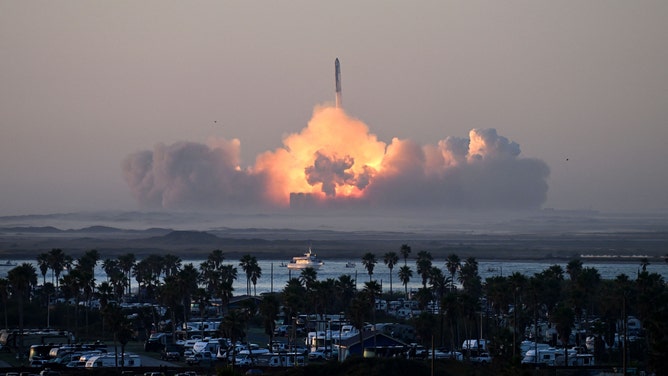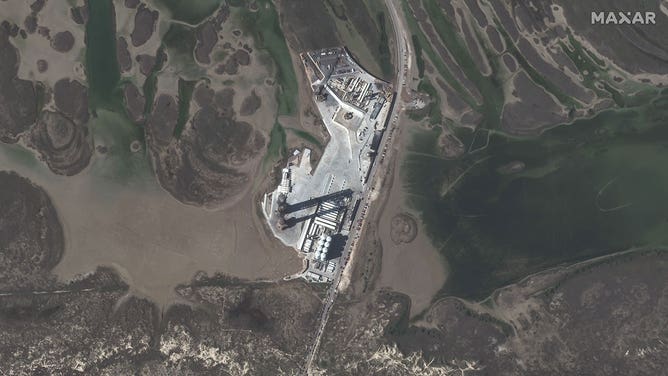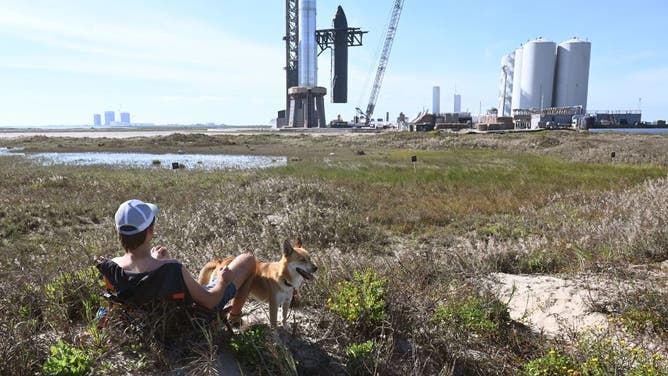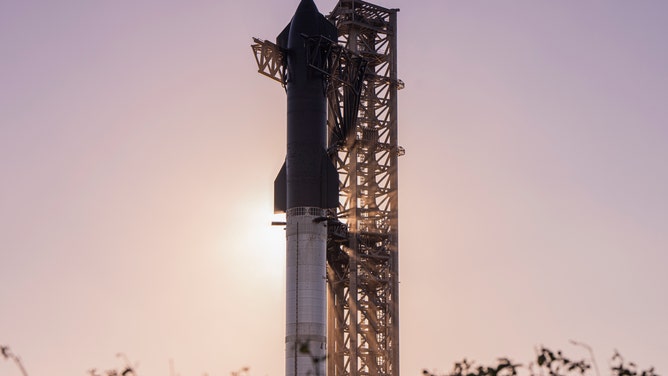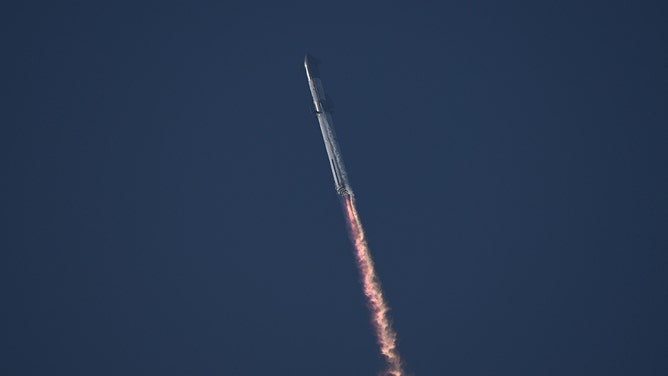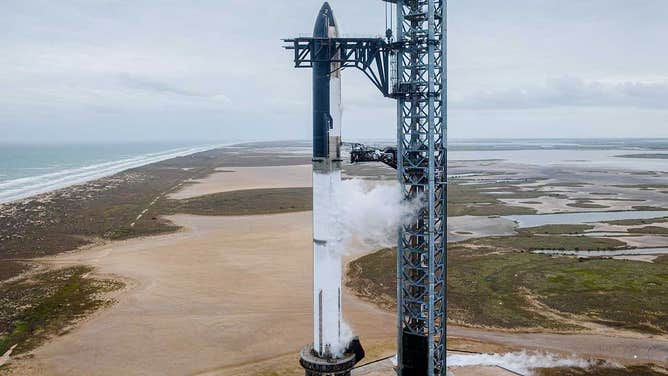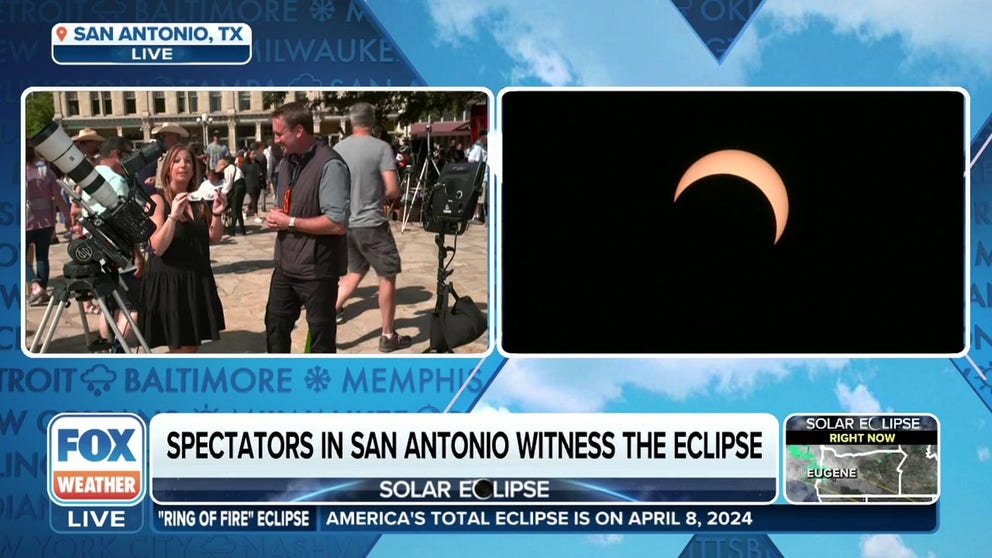Stellar achievements in space to celebrate from 2023
NASA's asteroid sample return and SpaceX's Starship test flights are among the highlights in space exploration this year.
'Precious cargo:' NASA's OSIRIS-REx gets picked up by a helicopter in Utah
The OSIRIS-REx asteroid sample hitches a ride on a helicopter after landing in the desert in Utah during Sunday.
This year marked more asteroid mission firsts and was a milestone gap year between NASA’s Artemis Moon missions as the U.S. space agency prepares to send astronauts around the Moon next year for the first time in more than 50 years.
In 2023, SpaceX launched a Falcon 9 rocket about twice a week, with more than 90 rockets launching from Florida compared to last year when the U.S. saw more than 60 launches. Elon Musk's company was shy of surpassing 100 launches this year but plans to top that in 2024.
On top of record rocket launches, 2023 brought exciting developments in spaceflight, with the first 3D-printed rocket launch attempt in Florida and SpaceX completing two exciting and explosive tests of the Starship in Texas.
Here's a look at 2023's top moments in space exploration.
Meet the next astronaut crew to say ‘Hello, Moon’
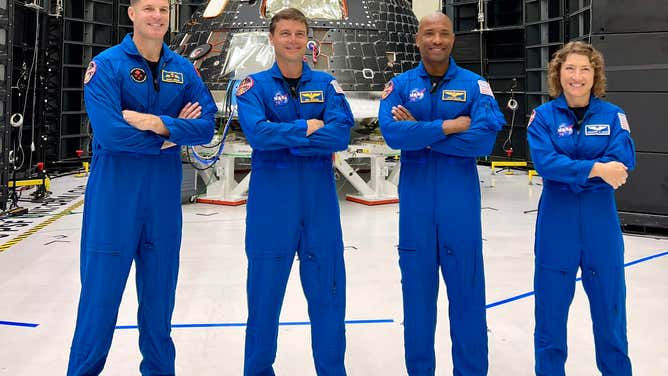
The Artemis II astronaut crew in front of the Orion spacecraft at Kennedy Space Center in Florida on Aug. 8, 2023. From left to right: CSA astronaut Jeremy Hansen and NASA astronauts Reid Wiseman, Victor Glover and Christian Hammock Koch. (Image: NASA)
(NASA)
We're a little over a year away from NASA's Artemis II mission around the Moon. It will be the first human lunar mission in more than 50 years and the penultimate mission before the next human Moon landing in late 2025.
This spring, NASA revealed who will be onboard the Orion spacecraft for the lunar trip. While an announcement is not an achievement, it helps put human faces to the upcoming mission and allows the public to get to know the crew long before they launch on the Space Launch System.
NASA astronauts Reid Wiseman, Victor Glover and Christina Hammock Koch, and Canadian Space Agency astronaut Jeremy Hansen are the Artemis II mission crew. They will test the Orion spacecraft's capabilities, preparing for the upcoming Moon landing.
ARTEMIS SPACESUITS REVEALED: SEE THE NEW GEAR THAT'LL HELP ASTRONAUTS WALK ON THE MOON
The space agency also selected a team of geologists to prepare astronauts for exploring the Moon's South Pole.
The big 5-0 around Jupiter

The featured image of Jupiter's clouds was composed from images and data captured by the robotic Juno spacecraft as it swooped close to the massive planet in August 2020.
(NASA/JPL-Caltech/SwRI/MSSS. Processing: Processing: Kevin M. Gill / NASA)
If you've seen some amazing images of the gas giant Jupiter in the past few years, those pictures most likely came from NASA's Juno spacecraft.
Juno has been orbiting the stormy world since 2016. It takes about 53 days to orbit Jupiter, and in April, the spacecraft completed its 50th swing around the planet. The mission is NASA's first to have a dedicated camera for citizen scientists. Anyone can upload images of Jupiter and help the mission scientists decide what JunoCam will photograph. The results of this public-NASA partnership have been beautiful.
The space probe is currently NASA's most distant planetary orbiter and keeps collecting data and images of Jupiter and its moons.
International Moon missions
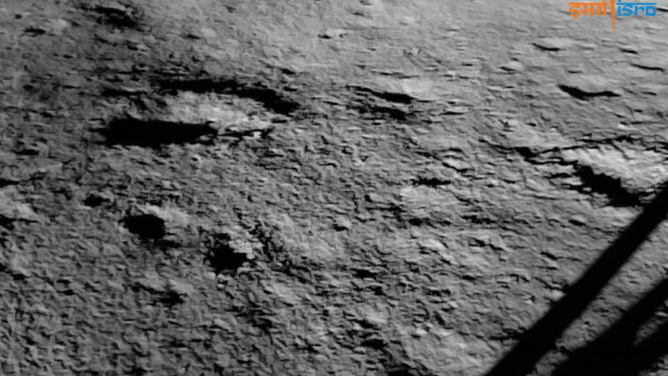
An image showing the lunar South Pole taken by India's Chandrayaan-3 mission on August 23, 2023. The shadow of the lander's leg can be seen in the lower right. (Image: ISRO)
(ISRO)
This year marked the first in a series of robotic missions to the Moon by the U.S. and other nations.
India's Chandrayaan-3 mission became the first rover and lander to touchdown near the Moon's South Pole region.
The India Space Research Organisation (ISRO) mission successfully soft-landed near the lunar South Pole, making India the fourth country to land a mission on the Moon and the first to land near the South Pole.
India's success happened a few days after Russia's Luna-25 spacecraft crashed into the Moon, ending the first Russian lunar landing attempt in nearly 50 years.
After launching with SpaceX from Florida, ispace, a Japanese-based company, attempted a Moon landing in April but was unsuccessful.
Next year, two American companies – Astrobotic and Intuitive Machines – will also attempt to land robots on the Moon carrying NASA science as part of the space agency's commercial lunar payload services program.
NASA astronaut spends more than 1 year in space
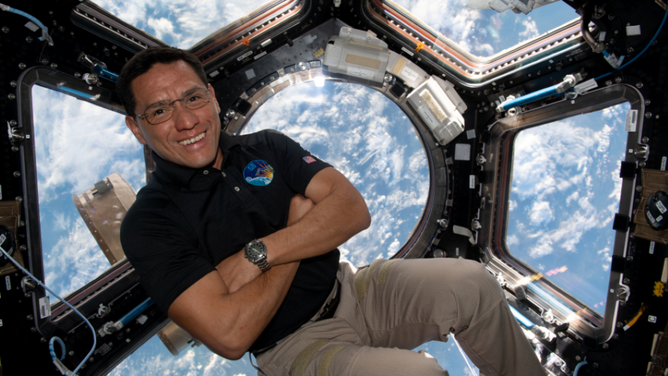
NASA astronaut Frank Rubio floats inside the cupola, the International Space Station’s "window to the world."
(NASA)
NASA astronaut Frank Rubio set the American record for the longest spaceflight this year after spending 371 days on the International Space Station. Rubio launched with two Russian cosmonauts on a planned six-month stay in space, but after a coolant leak was discovered in a Russian spacecraft – their ride back to Earth – the astronaut and two cosmonauts spent more than a year in space.
Exciting (and explosive) Starship test flights
SpaceX completed the first two test flights of the Starship and Super Heavy booster launch system in Texas. NASA plans to use Starship to land astronauts on the Moon in a few short years.
In April, the 400-foot-tall launch system made it off the pad and into the airspace above the Gulf of Mexico before exploding.
Nearly seven months later, SpaceX again launched Starship and Super Heavy, and this time, the vehicle reached the edge of space before the automated termination system triggered a self-destruct of the spaceship.
SpaceX CEO Elon Musk said the company plans to complete a third test much sooner than the seven-month gap between the previous tests.
NASA's asteroid sample touches down in Utah

The sample return capsule from NASA’s OSIRIS-REx mission is seen shortly after touching down in the desert Sept. 24, 2023, at the Department of Defense's Utah Test and Training Range.
(Keegan Barber / NASA)
One of the top achievements in space exploration came blasting back down to Earth in September.
NASA's tire-sized space capsule carrying pieces of the asteroid Bennu came barreling through Earth's atmosphere at 27,000 mph from deep space and successfully plopped down in the Utah desert.
The sample return marked a seven-year mission success for NASA's OSIRIS-REx spacecraft, which stands for Origins, Spectral Interpretation, Resource Identification, and Security-Regolith Explorer.
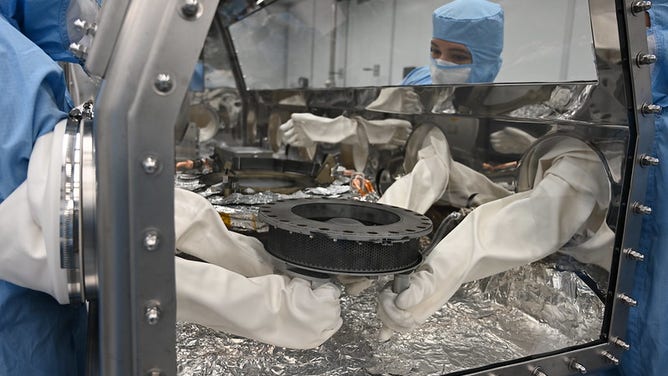
Astromaterials processor Mari Montoya and OSIRIS-REx curation team members set the TAGSAM (Touch and Go Sample Acquisition Mechanism) down in the canister glovebox after removing it from the canister base and flipping it over. (Credit: NASA)
(NASA)
The materials collected from Bennu are rich in carbon and continue to be analyzed by scientists on Earth. Meanwhile, the spacecraft remains in space awaiting an encounter with its next subject, the asteroid Apophis, which is making a flyby of Earth in 2029.
Annular solar eclipse puts ‘ring of fire’ in the sky
Spectators witness the eclipse at the Alamo in San Antonio, Texas
FOX Weather's Robert Ray spoke with the Alamo's Emily Baucum about how skygazers spent the day watching the eclipse and learning about the history of the Alamo. Oct. 14, 2023.
Skygazers from the Pacific Northwest to Texas were treated to an annular solar eclipse this October as the Moon blocked out nearly all the Sun's light and created a "ring of fire."
WHO WILL BE ABLE TO SEE THE APRIL 2024 TOTAL SOLAR ECLIPSE?
The path included landmarks such as The Alamo in San Antonio, the annual Albuquerque International Balloon Fiesta in New Mexico, Utah’s Canyonlands National Park and the Desert Southwest’s Four Corners Monument.
Hang on to those eclipse glasses, because on April 8, 2024, a total solar eclipse will pass over a large swath of the U.S. from Texas to Maine.
One year with Webb

The luminous, hot star Wolf-Rayet 124 (WR 124) is prominent at the center of the James Webb Space Telescope’s composite image combining near-infrared and mid-infrared wavelengths of light from Webb’s Near-Infrared Camera and Mid-Infrared Instrument.
(NASA, ESA, CSA, STScI, Webb ERO Production Team / NASA)
In July, NASA, the European Space Agency and the Canadian Space Agency marked one year of science with the powerful James Webb Space Telescope.
Since launching Christmas morning 2021, the telescope has exceeded the expectations of scientists worldwide.
It's only the beginning of what JWST will do for science.
The next generation of astronomers and space explorers will benefit the most from JWST as the telescope team believes it will be operating for 20 or 30 years.




